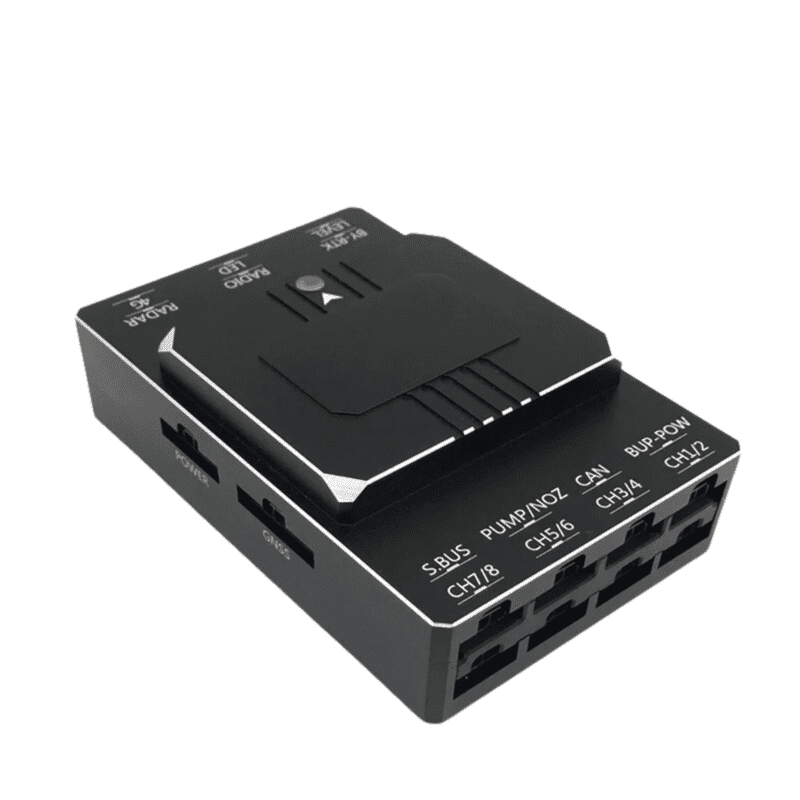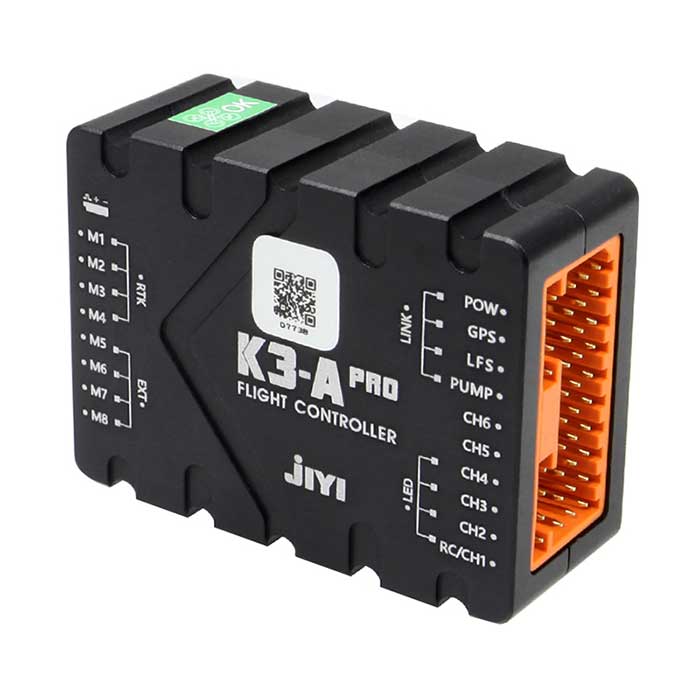Trustworthy Drone Navigating with SparkNavi Drone Flight Controller and GNSS/INS Made in Taiwan
Trustworthy Drone Navigating with SparkNavi Drone Flight Controller and GNSS/INS Made in Taiwan
Blog Article
The Relevance of Drone Flight Controllers in Modern Aerial Innovation: Key Components and Their Impact
In the world of modern-day airborne technology, drone flight controllers serve as the crucial systems that coordinate a drone's performance and abilities. As markets significantly count on drones for applications ranging from farming to surveillance, the evolving modern technology within trip controllers increases crucial inquiries concerning their future impact and possible developments.

Review of Drone Flight Controllers
In the realm of aerial technology, drone trip controllers work as the vital brain of unmanned airborne automobiles (UAVs), enabling accurate ability to move and stability during flight. These sophisticated systems integrate sensing unit information, processing algorithms, and control inputs, allowing drones to implement complicated trip patterns with precision.
Drone trip controllers utilize different sensing units, such as gyroscopes, accelerometers, and GPS components, to assess the UAV's alignment and placement in real-time. This details is necessary for keeping balance and making certain secure procedure in varied ecological problems. The controllers procedure this information to make immediate changes to the drone's motors, permitting smooth shifts and receptive handling.
In addition, flight controllers are equipped with sophisticated software application that supports features such as waypoint navigation, barrier evasion, and independent trip capacities. This software program is essential for both industrial and leisure applications, where dependability and accuracy are extremely important. As drone technology remains to advance, the development of trip controllers will certainly play a pivotal duty in improving UAV safety, performance, and flexibility, inevitably expanding their applications throughout various sectors.
Key Parts Explained
Comprehending the basic components of drone trip controllers is important for comprehending how these systems run successfully. At the heart of a flight controller is the microcontroller, which functions as the brain, processing data from various sensors and carrying out commands. Crucial sensing units consist of gyroscopes and accelerometers, which gauge the drone's positioning and movement, providing vital responses for stabilization.
An additional trick part is the barometer, which assesses elevation by measuring atmospheric pressure, while general practitioner components supply positional information, making it possible for autonomous navigating - SparkNavi drone flight controller and GNSS/INS made in taiwan. The flight controller also interfaces with Electronic Rate Controllers (ESCs), which regulate the rate of the drone's motors based upon the controller's commands
Interaction components, such as radio receivers, help with remote input, permitting drivers to send out commands in real-time. Furthermore, some trip controllers integrate software that can handle complex formulas for waypoint navigation, flight preparation, and telemetry data evaluation.
Function in Flight Security
Central to maintaining trip stability, drone trip controllers use advanced algorithms to process sensor data and make real-time adjustments. These controllers are equipped with an array of sensors, including barometers, accelerometers, and gyroscopes, which continuously keep track of the drone's alignment, elevation, and speed. By interpreting this information, the trip controller can identify deviations from the preferred flight path and react promptly to maintain stability.
As an example, if a drone experiences an unforeseen gust of wind, the flight controller can quickly change the motor rates to counteract the disturbance, making certain a steady flight trajectory. This capability is vital not just for manual trip procedures yet additionally for performing complex maneuvers and preserving smooth flight in numerous environmental problems.
.jpg)
Furthermore, image source the innovative algorithms utilized in trip controllers, such as PID (Proportional-Integral-Derivative) control, enable fine-tuning of the drone's action to changes in flight problems. By enhancing these control parameters, trip controllers can enhance security, boost responsiveness, and reduce pilot work. Ultimately, the role of this contact form flight controllers in making sure trip security is crucial for the risk-free and efficient operation of modern-day drones throughout diverse applications.
Influence On Autonomous Procedures

Self-governing operations are specifically crucial in varied applications such as agriculture, distribution, and surveillance solutions. With improved flight controllers, drones can autonomously navigate predetermined routes, effectively collect data, and adapt to vibrant environments. This capability minimizes the demand for continuous human oversight, therefore increasing operational efficiency and security.
Furthermore, the implementation of device knowing strategies within trip controllers enables drones to boost their performance with time by gaining from previous objectives. This adaptability leads the way for much more innovative independent applications, such as swarm modern technology, where multiple drones collaborate their actions to accomplish an usual goal.
Future Trends in Trip Controllers
Developments in flight controller technology are poised to reinvent drone capabilities in the coming years. One substantial pattern is the integration of artificial knowledge (AI) and artificial intelligence formulas, allowing drones to gain from their settings and make real-time decisions. This advancement will certainly improve self-governing navigation, obstacle avoidance, and goal preparation, substantially boosting operational efficiency and security.
Additionally, the advancement of advanced sensor modern technologies, such as LiDAR and multispectral imaging, will certainly supply trip controllers with richer information inputs. This will certainly facilitate a lot more advanced logical capacities, enabling drones to carry out complex jobs, such as accuracy farming, rescue and search, and framework assessments with unprecedented precision.
Another emerging trend is the miniaturization of trip controller parts, which will bring about lighter and a lot more portable drones. This development will certainly extend trip durations and haul capacities, making drones more functional for different applications.
Final Thought
Finally, drone trip controllers function as important parts in modern aerial technology, ensuring security and precision in maneuverability through the integration of microcontrollers, accelerometers, and GPS modules. SparkNavi drone flight controller and GNSS/INS made in taiwan. Their capacity to make it possible for independent procedures and adapt to various applications emphasizes their value throughout multiple here sectors. As improvements in expert system and sensing unit modern technology remain to emerge, the potential for enhanced abilities and boosted operational efficiency in drone systems will likely improve the future of airborne applications
Central to preserving trip security, drone trip controllers utilize innovative formulas to process sensing unit data and make real-time modifications. By analyzing this information, the trip controller can determine inconsistencies from the desired flight path and respond immediately to preserve stability.
In addition, the advanced formulas utilized in trip controllers, such as PID (Proportional-Integral-Derivative) control, allow for fine-tuning of the drone's reaction to modifications in flight conditions. Ultimately, the role of flight controllers in ensuring trip stability is vital for the reliable and risk-free operation of contemporary drones throughout diverse applications.
The improvements in drone flight controllers not just enhance trip security but also dramatically affect self-governing procedures. SparkNavi drone flight controller and GNSS/INS made in taiwan.
Report this page